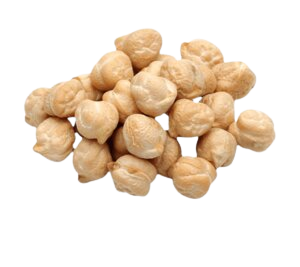Pulses are annual leguminous crops that produce one to twelve grains or seeds of varying size, shape, and colour within a pod and are used for both food and feed. The term "pulses" refers to crops grown entirely for dry grain, omitting crops grown green for consumption, which are categorised as vegetable crops, as well as crops grown primarily for oil extraction and leguminous crops grown simply for sowing. Pulses can be processed into entire pulses, split pulses, pulse flours, and pulse fractions such as protein, starch, and fibre. The flour and fractions are used in a variety of industries, including meat and snack food, bakery and drinks, and batter and breading.
India is the world's top producer (25% of global production), user (27% of global consumption), and importer (14% of global imports) of pulses. Gram is the most important pulse crop, followed by Tur/Arhar, Urad/Black Matpe, and Moong. Major pulses grown and consumed in India include Bengal Gram, Pigeon Peas, Green Beans, Chick Peas (Kabuli Chana), Red Kidney Beans (Rajma), Black Eyed Peas (Lobiya), Lentils (Masoor), and White Peas (Matar).

Origin & Distribution
Gram originated in South West Asia, in Afghanistan and Persia, while Pigeonpea originated in Africa, Lentil in Turkey to South Iran, and Fieldpeas in the Mediterranean Region of Southern Europe and Western Asia. Pulse crops are grown during the agricultural seasons of Kharif, Rabi, and Zaid. Rabi crops require a mild cold climate during the sowing phase, a cold climate during vegetative to pod development, and a warm climate during maturity and harvesting. Similarly, Kharif pulse crops require a warm temperature from planting through harvesting. Summer pulses live in warm climates. To produce seed, seed must go through several stages, including germination, seedling, vegetative, flowering, fruit setting, pod development, and grain maturity / harvesting..
Pulses have three crop seasons:
- Kharif - Arhar, Urad, Moong, Lobia, Kulthi, and Moth
- Rabi - Gram, Lentil, Pea, Lathyrus and Rajma
- Summer - Greengram, Blackgram and Cowpea
The top five pulse producing states are Madhya Pradesh, Maharashtra, Rajasthan, Uttar Pradesh, and Karnataka. Additionally Punjab, Haryana, West Bengal's delta region, coastal Andhra Pradesh, Tamil Nadu, Kerala, are the other regions with high output.
Uses
Pulses, because of their high contents of nutritional fibre, vitamins, minerals, phytochemicals, and complex carbs, pulses are considered a superfood. Aside from nutritional benefits, pulses aid in digestion, blood glucose reduction, inflammation reduction, blood cholesterol reduction, and the prevention of chronic health conditions such as diabetes, heart disease, and obesity. Pulses are increasingly being employed in the manufacture of ready-to-eat (RTE) foods. Healthy snack meals are increasingly popular among the working population as a result of rapid urbanisation, changing lifestyles, and stressful work schedules. Pulses contribute to healthy soils and climate change mitigation through their nitrogen-fixing qualities, in addition to being a vital source of protein for a substantial section of the global population.
Key Market Segmentation
Global Pulses market is categorised based on : Product type, By End-Use and By Region.
Segmentation based on Product Types -
- Chickpeas
- Kaspa Peas
- Lentils
- Pigeon Peas
- Fava Beans
- Black Gram
- Mung Beans
